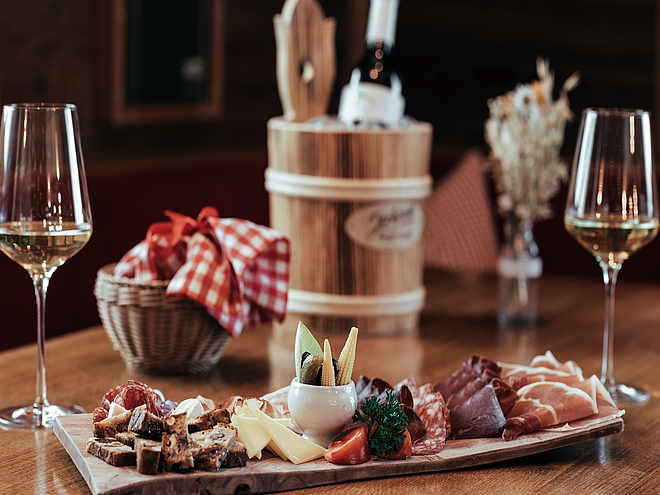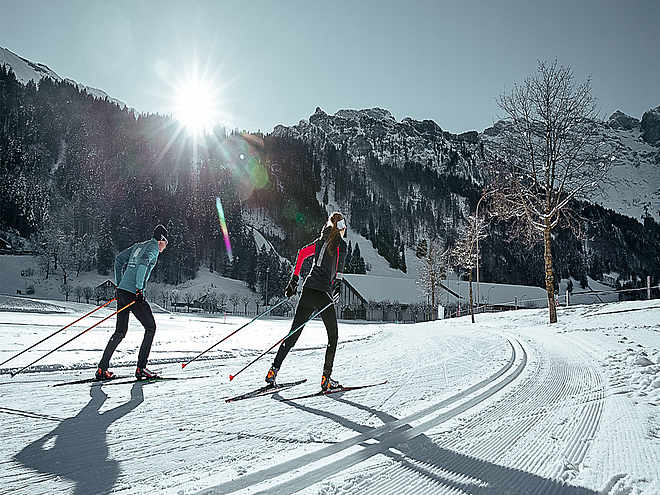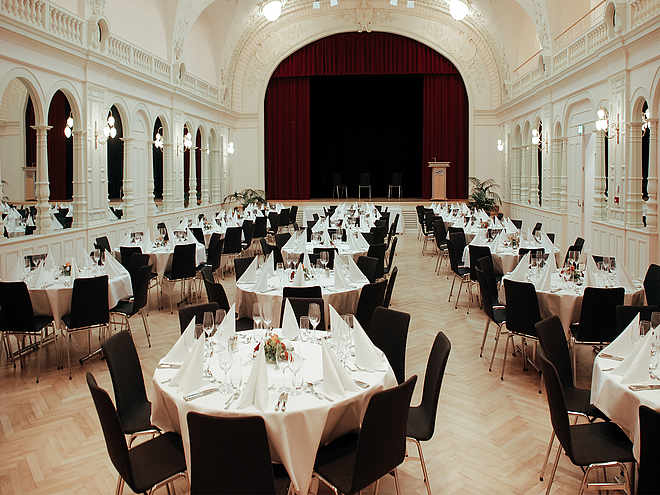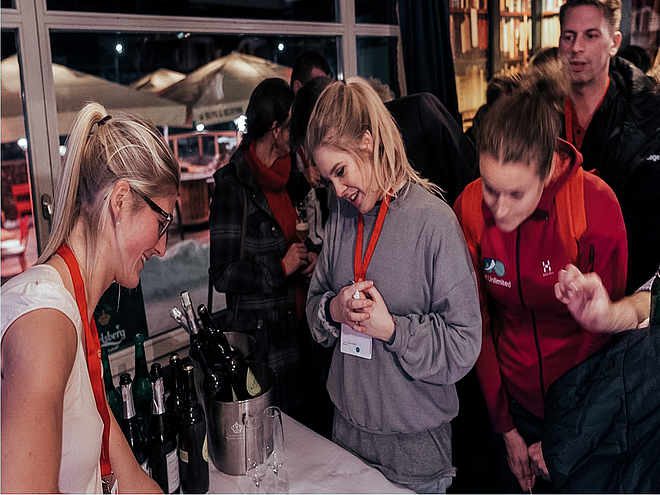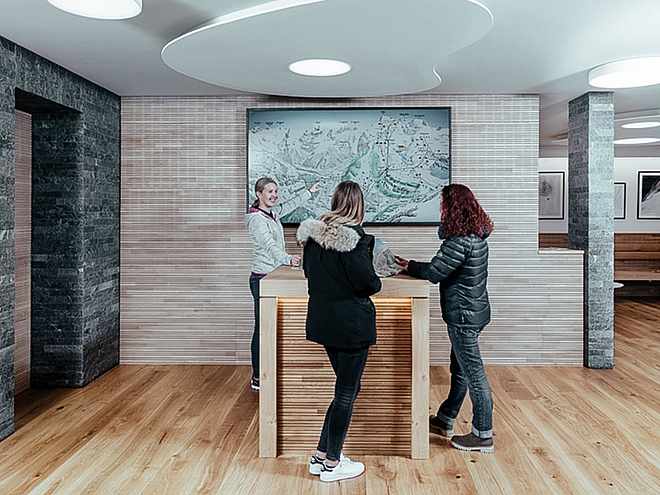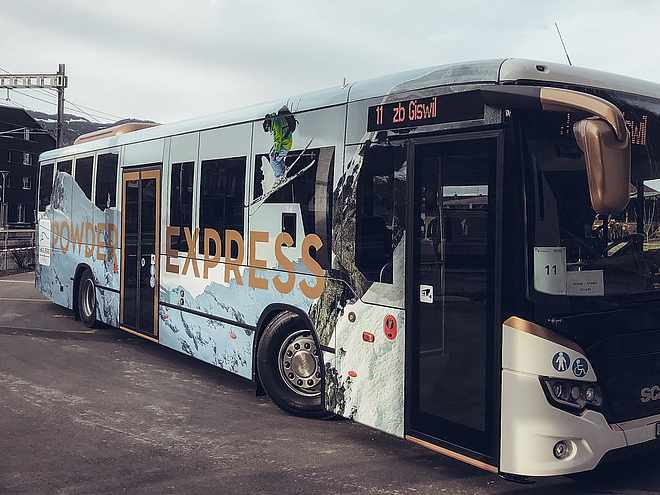When the golden autumn says goodbye, the fog arrives in the lowlands, but in the higher altitudes the precipitation turns into snow, at the latest then my legs start to tingle. The anticipation of the first ski day grows. Since the autumn weather was sunny and beautiful for a long time, I preferred to spend the time outside still on the bike. But actually I could have gone skiing on top of the Titlis glacier already from mid-October. What a privilege I think to myself once again - I can choose whether I take advantage of the fantastic biking conditions in Engelberg until the end of the season or whether I start my ski season very early.
Nothing comes from nothing
No matter when the starting signal for skiing is given, I know one thing: at the beginning of winter, my muscles are not yet trained well enough to not over-acidify too quickly on the long piste or freeride runs with an average altitude difference of more than 1000 meters. From the Titlis down to the valley station, it's even an incredible 2000 meters of downhill pleasure - the counterpart as a freeride run is the world-famous Galtiberg.
Although I have the advantage of having a good basic condition and plenty of power in my legs from biking, I still prepare myself for the winter with specific strength training. Other muscle groups are used, the movement sequences differ and the force effect on the entire musculoskeletal system should not be underestimated when skiing. Do you remember the advertising slogan of a well-known Swiss chocolate drink? It motivates me to train, because I know that with a little diligence in the preseason I can enjoy my skiing pleasure from the first day of skiing not immediately (technically) better, but in any case longer.
Motivate yourself and join in!
Maybe I can convince and motivate you to start the ski season well prepared. Excuses like "I don't like to go to the gym" or "I don't want to invest in expensive equipment" don't count and even less "I don't have time" - all exercises can be done comfortably at home and you don't need any equipment. The only thing you need is a little bit of time, and let's face it - everyone has it if they want it.
In the following, I'll introduce you to a functional strength endurance training that strengthens not only your legs but also the muscles of your back, buttocks and core, because the body only functions effectively as a unit. A positive side effect of the training: You also reduce your risk of injury.
Strength Endurance Workout
Start with 12 - 25 repetitions per exercise and complete 1 - 3 sets, each with a half to full minute rest. Once you have started with a leg exercise and finished the sets, follow with a torso/upper body exercise series, then legs again, etc. Be sure to execute at a high level, correct yourself in the mirror, and most importantly, "keep smiling!"

Execution: Legs hip-width, push butt back down as if you were sitting on a chair, knees forward toward toes, back straight, abdomen tense
Muscles used: Thigh and gluteal muscles

Execution: Lie sideways on the floor/ mat, elbows under shoulder. Push hips up, straight line from feet to head. If you are stable here, slowly bring the upper leg towards the ceiling and back, otherwise hold in support (option: place lower leg on the floor). Switch sides!
Muscles used: Lateral abdominals, hips, gluteus maximus, abductors.

Execution: Legs hip-width, push buttocks down backwards as if you were sitting on a chair, knees forward towards toes, back straight, abdomen tense, dynamically push off from the squat position, feet lifting off the floor.
Muscles used: Thigh and gluteal muscles.

Execution: Basic position support (hands under the shoulders, abdomen and buttocks firm, straight line from the feet to the head), look to the floor. Alternately push knees forward and back on a line, keeping hips straight.b
Muscles used: Straight abdominal muscles,thigh and gluteal muscles.

Execution: Legs hip-width, knees slightly bent, abdomen firm. Alternating steps forward. Front knee pushes toward toes, rear pulls down (control right angle), upper body remains upright.
Muscles used: Large gluteus maximus, front of thigh.

Execution: Forearm support, elbow under shoulder, head in line with the spine, look down. Tighten abdomen and buttocks, press up from support onto hands (one arm at a time - alternate), keeping tension in torso, buttocks stay in line, no rotation in hips.
Muscles used: Entire torso muscles, shoulders

Execution: Supine position, legs hip-width apart, head and shoulders relaxed, arms at the sides of the torso. Push hips toward ceiling, then lower again, buttocks tensed.
Muscles used: Gluteal muscles, lower back muscles, back of thighs.

Execution: Prone position, facing the floor, arms extended forward. Raise/lower right arm and left leg off the floor, then left arm and right leg, flowing movements. Head in line with spine.
Muscles used: Back and deep muscles
Author
Katrin Benz
Katrin works at Engelberg-Titlis Tourimus AG as a marketing communication manager and is a sports scientist. She likes to bring her knowledge and passion for sports, mountains and exercise into her daily work. She is happy when she can motivate people to find a balance for themselves in nature.
















